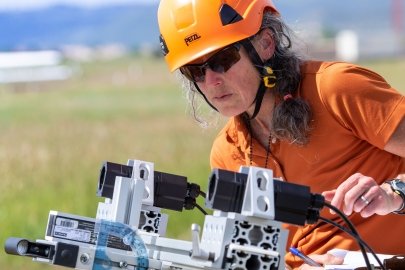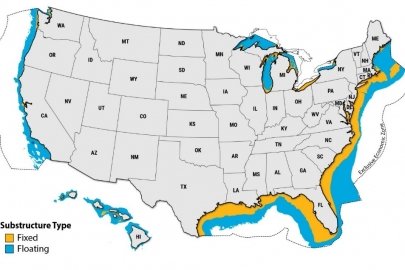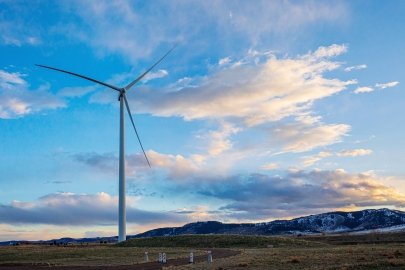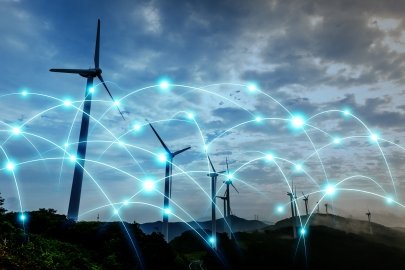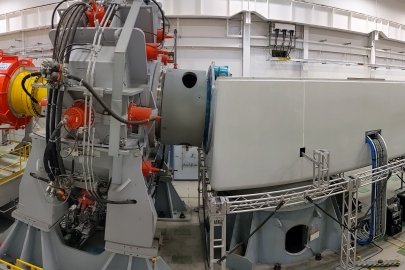Researchers from the U.S. Department of Energy’s National Renewable Energy Laboratory build an open-source model to predict the future cost of offshore wind energy.
Wind Energy Technologies Office
April 13, 2023Everyone is inclined to make predictions about the future based on observed patterns from the past. Take your local weather reporter as a familiar (and sometimes blame-worthy) example.
When it comes to the future of wind energy in the United States, researchers have developed models to make predictions about technologies, costs, and siting characteristics that sometimes stretch many years or even decades into the future.
This article is part of the
SPRING 2023 R&D NEWSLETTER
In This Issue
Researchers at the U.S. Department of Energy’s (DOE) National Renewable Energy Laboratory (NREL), Matt Shields, Philipp Beiter, and Jacob Nunemaker, recently developed a publicly-available tool that aims to do just that. The Forecasting Offshore wind Reductions in Cost of Energy (FORCE) model combines past years’ wind energy project capital costs with global wind energy deployment forecasts to estimate the future cost of offshore wind energy. A recent NREL report details the method and findings of the new FORCE model.
“In a sense, current costs don’t matter all that much for making decisions today,” said Beiter. “It’s perhaps more critical to get an understanding of what the future may look like. That’s because the decision to plan, develop, and invest in offshore wind energy projects are often made several years in advance of the plant’s commercial operation.”
The FORCE model estimates that the average levelized cost of energy, or the lifetime cost of a power plant divided by its overall energy production, could decrease from $75/megawatt-hours (MWh) in 2021 to $53/MWh in 2035 for fixed-bottom offshore wind energy and from $207/MWh to $64/MWh in 2035 for floating offshore wind energy. These forecasts are based on global offshore wind energy deployment projections, specifically the expectation that installed capacity is expected to grow ninefold by 2035 with support from supply chain, port, and transmission infrastructure development.

The FORCE model estimates the average levelized cost of energy could decrease from $75/megawatt-hours (MWh) in 2021 to $53/MWh in 2035 for fixed-bottom offshore wind energy and from $207/MWh to $64/MWh in 2035 for floating offshore wind energy.
Projected costs could further decrease based on ongoing DOE research and development efforts—for example, faster deployment and growth in the floating offshore wind industry. Future costs can inform investment decisions, national goal development, and policies, such as the Biden-Harris administration’s goals of deploying 30 gigawatts of offshore wind energy by 2030 and 15 gigawatts of floating offshore wind by 2035.
“Our goal was to provide key decision makers with a useful tool that provides more transparency of how cost projections are derived,” Shields said.
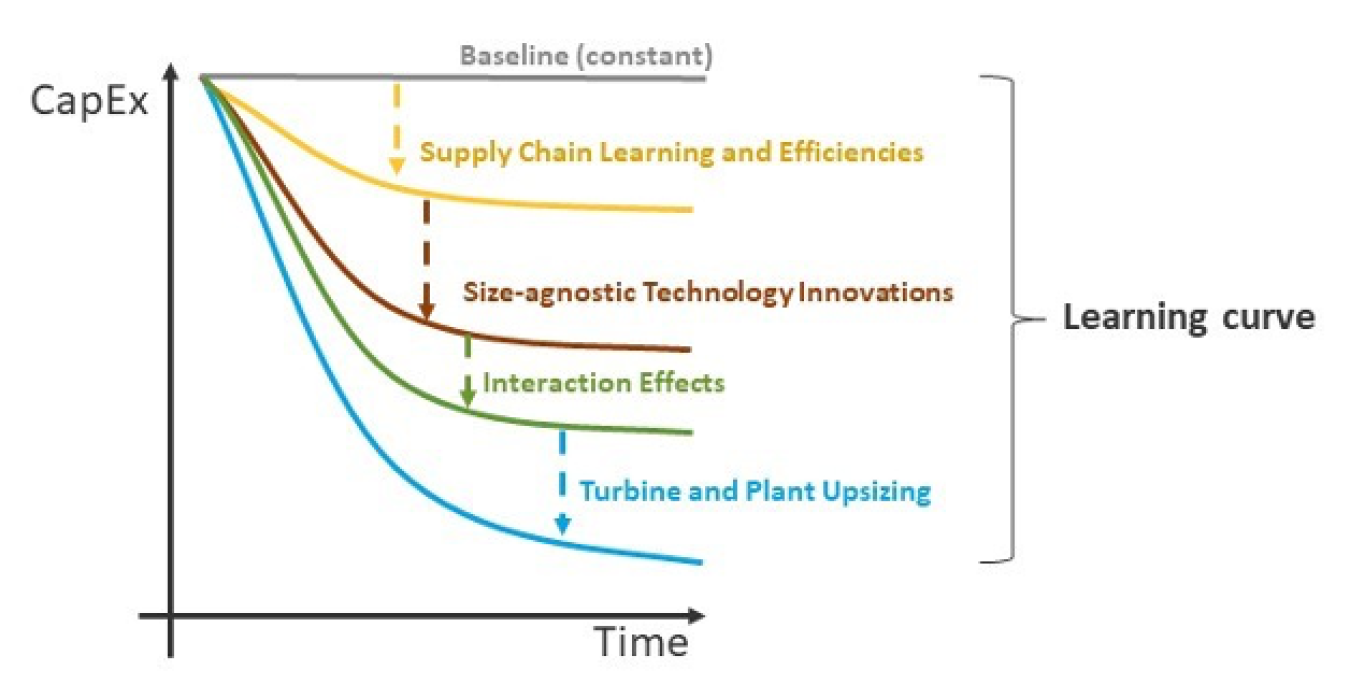
The FORCE model calculates a learning curve based on historical wind energy costs (capital expenditures, or CapEx) of global installed offshore wind energy projects and future anticipated deployment (time). The capital investment required for wind energy project development decreases at a constant learning rate (the idea that costs fall by a certain percentage by each doubling of installed offshore wind capacity). These effects are captured by the FORCE model, ultimately determining the shape of the learning curve and the forecasted cost of offshore wind energy.
FORCE is one of the few open-source models of its kind and uses learning curves. This approach is based on a common economic pattern that is applicable not just for making wind turbines but any industrial product, such as cars or planes. In essence, the more a given industry makes of something, the more efficient it will become at making it, because the workforce becomes better trained and the production process gets more refined and less error prone. In turn, this causes the cost of production to decrease—rapidly at first and then more gradually, corresponding to a doubling of output—creating (you guessed it) a learning curve.
“In the field of offshore wind energy, there are so many potential innovations to look at—hundreds, thousands—which can be overwhelming to assess comprehensively in any sort of future-cost analysis,” said Beiter. “Learning curves, as implemented in the FORCE model, can simplify this challenge to a single variable: expected capacity of offshore wind in the future.”
As the United States begins to shape its renewable energy future, the projected cost of offshore wind energy will help forecast the type of investments necessary to reach the Biden-Harris administration’s goals. And although the FORCE model (like the best weather reporter) can’t predict exactly what’s to come, it can help energy decision makers anticipate possible futures.
Subscribe to the WETO e-newsletter to stay informed on the latest wind energy news, events, publications, and updates.


